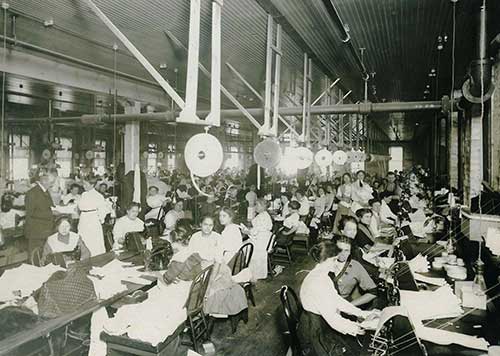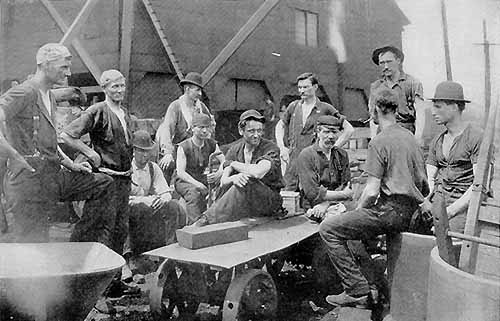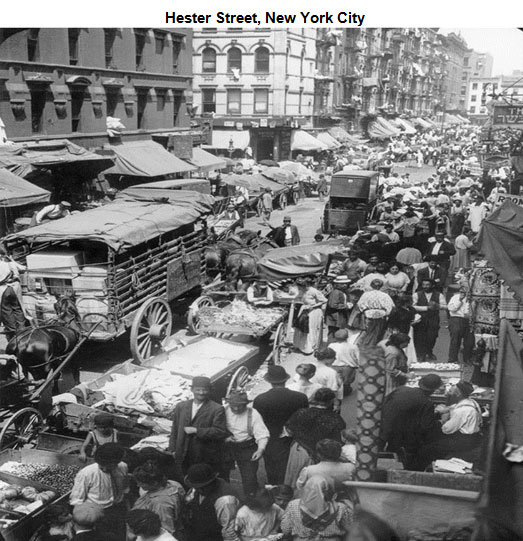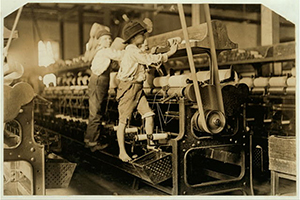During the Gilded Age people who worked in factories b. During the Gilded Age a growing number of Americans worked in urban areas in manufacturing factories.

Lesson 1 04 Effects Of Big Business
Men women and children b.
. The wages they earned were barely enough to support their families. In cities like New York and Chicago a significant portion of these women worked in the garment industry as dressmakers and embroiderers. Compared to today workers were extremely vulnerable during the Gilded Age.
During the Gilded Age there were a large number of immigrants that were coming to North America. Working Conditions during the Gilded Age As business leaders merged and consolidated their forces it seemed necessary for workers to do the same. Had to work long hours.
The Garment Workers Strike. They worked 10-hour shifts six days a week. Were often taught new skills.
From those 117 million immigrants106 million of those immigrants came from Europe which made up 90. 25-35000 deaths and 1 million injuries per year occurred on industrial jobs. During the Gilded Age people who worked in factories had only moderate health benefits in case of accidentshad to work long hourshad many opportunities for job promotionswere often taught new skills.
During the Gilded Age people who worked in factories had to work long hours. Adults worked long and hard and sometimes they were injured as a result of their jobs. Had to work long hours.
During the gilded age people who worked in factories had only moderate health benefits in case of accidents. Children and women worked in factories and generally received lower pay than men. Had only moderate health benefits in case of accidents.
Both men and women. During the Gilded Age there were around 117 million people that came to America. The Gilded Age can be characterized as an era of strikes.
Factory work was very dangerous and it was difficult if not impossible to hold factory owners responsible for deaths and injuries. A example of a job in the gilded age that had terrible working conditions was the triangle shirtwaist factory where workers were lock in the sweatshops for 9 hours a day to manufacture a special kind of dress. Working conditions were very poor during the era of The Gilded Age.
Had many opportunities for job promotions. On march 25 1911 the factory caught on fire and many workers were trapped on the 8th floor. They worked 10-hour shifts six days a week.
MARK ME AS BRAINLIEST AND GIBE ME POINTS. As workers moved away from farm work to factories mines and other hard labor they faced harsh working conditions such as long hours low pay and health risks. Early in the industrial era there was no minimum wage leaving it up to the factory owners to set the rate at.
Immigrants wait in line to enter Ellis Island. Men working in a textile factory in 1921. Adults worked long and hard and sometimes they were injured as a result of their jobs.
During the Gilded Age people who worked in factories had only moderate health benefits in case of accidents. The wages they earned were barely enough to support their families. Were often taught new skills.
Between 1880 and 1920 20 percent of women over the age of 10 joined the paid labor force. Industrial Workers During The Gilded Age. They worked 10-hour shifts six days a week.
The Gilded ages is the period between 1860s to 1896 this was directly after the civil war its part of the reconstruction process and many americans started moving into the urban areas and working in the factories usually working 10 hours shifts 6 days a week for a salary that could barely support a family. Safety was a large issue. During the Gilded Age a growing number of Americans worked in urban areas in manufacturing factories.
By the year 1900 38 of the American population lived in cities and these people usually had urbanized jobs at factories. The wages they earned were barely enough to support their families. Similar to the farmers during the Gilded Age industrial workers combatted poor working conditions child labor low wages and long hours by forming labor unions and organizing strikes ending as a massive failure.
Immigration and other factors lead to a boom in industrial labor and thus also to an increase in dissatisfaction with wages and working conditions. MARK ME AS BRAINLIEST AND GIBE ME POINTS. Had many opportunities for job promotions.
Adults worked long and hard and sometimes they were injured as a result of their jobs. During the Gilded Age the shift to a system of mass production that paid workers low wages affected a. During the Gilded Age a growing number of Americans worked in urban areas in manufacturing factories.
Although Northern wages were generally higher than Southern wages exploitation and unsafe working conditions drew workers together across regions in a nationwide labor movement.
Immigrants In The Workforce Treatment Of Immigrants During The Gilded Age

Notable Labor Strikes Of The Gilded Age

Factory Working Conditions For Both Men And Women During This Time Were Atrocious Picture Show Historical Images Wwi
Women And Children The Gilded Age Urbanization

Saqs For Apush Topic 6 7 Labor In The Gilded Age By Peter Paccone Medium


0 comments
Post a Comment